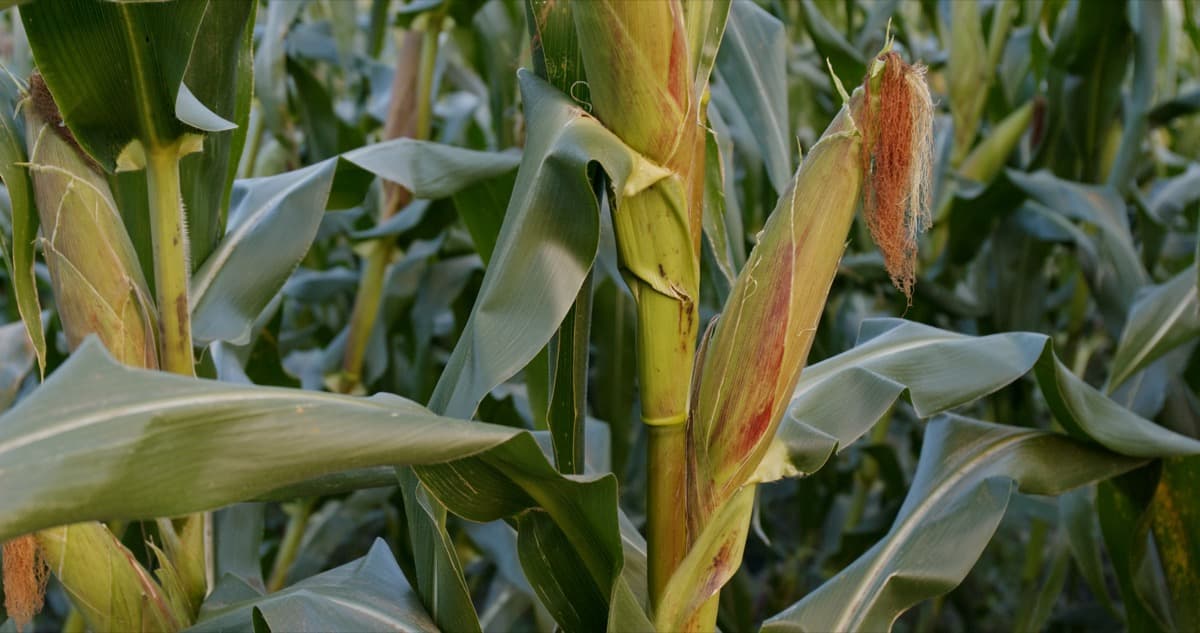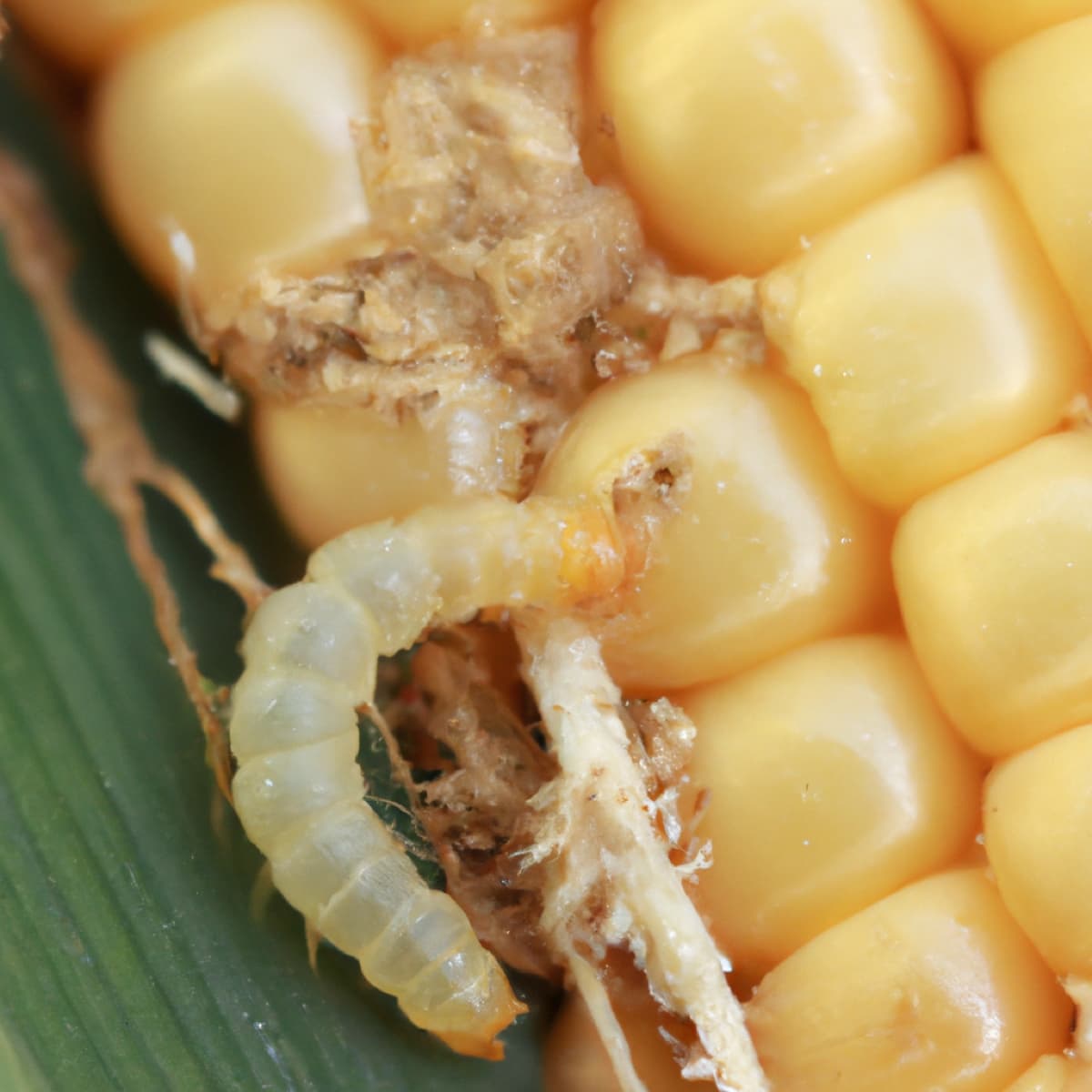The Maize Earworm, Helicoverpa armigera, belonging to the Family Noctuidae of the Order Lepidoptera, is also known as Maize Cornworm pest. It is a polyphagous caterpillar that feeds on different crops maize, cotton, soybeans, sorghum, tomatoes, and other crops in the family of Solanaceae. The larvae of the maize earworm feed on the kernels within maize ears, which can cause significant crop damage and yield losses.

Also, the earworm larvae can survive for extended periods without food and thus often persist on the same crop for multiple years. To effectively manage this pest, it is important to understand its life cycle, its preferred habitats, and the best methods for controlling it. This article will provide an overview and discussion of the Maize Ear Worm Pest in Maize crops, including its symptoms, identification techniques, and control.
Maize/Corn Ear Worm Pest Management
Life Cycle of Maize Ear Worm Pest in Maize Crop
The life cycle of the maize earworm pest has four stages. They are egg, larva, pupa, and adult. The egg stage is the first stage of the maize earworm pest’s life cycle. During this stage, the female moth lays her eggs on the leaves of the maize plant. The eggs are small and white; the larvae will emerge when they hatch. The next stage is the larval stage. During this stage, the larvae feed on the plant’s kernels and leaves, causing damage to the crop.
The larvae can also be vectors for diseases such as corn earworm disease. After several weeks, the larvae will form a pupa inside the maize ear, from which the adult moth will eventually emerge. The adult stage of the maize earworm pest is the most damaging. The moth can fly and spread to other fields at this stage, causing further damage. The adult moth will lay its eggs on the leaves of the maize plant, and the cycle will start again.
Occurrence of Maize Ear Worm Pest in Maize Crop
- Location of maize ear worm pest: This pest is found to infest the maize crop in countries like the United States, Canada, Mexico, Brazil, Peru, Germany, Italy, the United Kingdom, Africa, India, China, Japan, and the Philippines.
- Host range: The maize earworm pest can infect different crops, including maize, cotton, tomato, sorghum, millets, sweet corn, and soyabean.
Factors Favoring the Population Increase of Maize Ear Worm Pest in Maize Crop
- Insecticides – Using insecticides, such as pyrethroid, can kill beneficial insects that help control the pest population.
- Field practices – Field Practices – Poor field practices, such as late planting, over-fertilizing, and plowing during the growing season, can also increase maize earworm pests.
- Insecticide resistance – Developing insecticide resistance in the pest can also increase its population.
- Availability of host plants – The presence of other host plants, such as sorghum, millet, and sweet corn, provides the maize earworm pest with a wider range of food sources, allowing its population to grow rapidly.
In case you missed it: Maize Pink Stem Borer Pest Management: Symptoms, Treatment, Chemical, Biological, Natural, and Organic Control

Identification of Maize Ear Worm Pest in Maize Crop
- Egg: The eggs are spherical and white and are laid in solitary.
- Larva: The color of the larvae varies from green to brown, with discontinuous dark grey lines and bands on their body.
- Adult: The adult is a brown-colored stout moth with a V-shaped discolored spot present on their forewings. And the hindwings are pale white with a black outer margin.
Damage Symptoms of Maize Ear Worm Pest in Maize Crop
- Adults lay eggs inside the maize husks, and their larvae feed on the maize kernels, reducing yield and quality.
- The larvae feed on the maize plant’s silks, tassels, grains, and ears, leaving behind small holes and discolored kernel areas.
- This pest is most damaging during the silking stage of the plant’s development. The caterpillar can feed and damage the kernels at this stage, resulting in yield losses.
- The caterpillars feed on the silks of the corn ear, causing them to turn brown and dry up, and on the husk of the ear, causing it to become frayed or shredded.
- As they feed, they also spread bacteria and fungi that can cause disease in the maize crop.
- Adult moths can fly up to 30 km and lay up to 400 eggs, making them highly mobile and difficult to control.
Percentage of Yield Loss in Maize due to Maize Ear Worm Pest
- In the United States, yield losses range from 0 to 20%, based on the region, but losses above 10% are common. In Mexico, 40% of losses have been witnessed in some areas, while in India and China, losses of up to 80% have occurred in some areas.
- In South Africa, losses of up to 50%, while in Zimbabwe, losses of up to 70% have occurred. In Central and South America, losses range from 30 to 50%. If the expected yield of a maize crop is 50 bushels per acre, the ETL may be about four larvae per ear.
Cultural Control of Maize Ear Worm Pest in Maize Crop
- Intercropping – This involves planting two or more crops in the same field, which can help reduce the incidence of the pest.
- Traps – Set up the light traps in the field of pheromone traps at 12-14 per hectare to kill the adult earworm moths.
- Fallowing – Leaving the field fallow for a year also reduces the amount of available food for the insect and decreases the overall pest population.
- Ploughing – Ploughing the soil and incorporating crop residues into the soil can reduce the number of larvae and pupae that survive.
- Cover crops – They can also be used to reduce the amount of food available and the amount of shelter for the pest.
Biological Control of Maize Ear Worm Pest in Maize Crop
- Parasitoids – Trichogramma wasps are used to control maize earworm pests by laying their eggs in the eggs of earworms. The larvae of the wasp then feed on the earworm eggs, preventing them from hatching and thus reducing the pest population. Also, Bacillus thuringiensis (Bt) is a bacterium that produces a toxin that is toxic to earworms. When Bt is applied to the crop, it is taken up by the earworms and kills them.
- Predators – Predators feed directly on the maize earworm larvae. Ladybird beetles, ground beetles, beneficial nematodes, and lacewings are all predators that can feed on the maize earworm larvae.
Chemical Control of Maize Ear Worm Pest in Maize Crop
- Spray insecticides – Spray Carbaryl 50% WP in the silk drying stage by mixing 1.2 kg in 500-600 liters of water per ha. And repeat the same two weeks from the first application.
- Apply 25kg of Carbaryl 10 D or Malathion 5 D or Phosalone 4 D per hectare on the 3rd and 18th day after panicle emergence.
Preventive Measures for Control of Maize Ear Worm Pest in Maize Crop
- Apply NPV at 10-day intervals at 1.5 X1012 POB with Crude sugar 2.5 kg + cotton seed kernel powder 250 g on the ear heads in two applications.
- Mechanical control measures such as hand-picking the pest can reduce the population of the maize earworm pest.
- The plants should be monitored regularly, and the affected plants should be removed from the field to reduce the spread of the pest.
In case you missed it: Maize Shoot-fly Pest Management: Symptoms, Treatment, Chemical, Biological, Natural, and Organic Control

Conclusion
The maize earworm is a major pest of maize crops worldwide, causing significant economic losses. Control methods include cultural, biological, and chemical approaches, but the best control method depends on the region and the severity of the infestation. Integrated pest management strategies are the most effective approach for reducing damage and losses. The maize earworm pest may be better managed with continued research and development.
- Beneficial Insects in Pest Management
- Natural Solutions for Pest Control in Flower Gardens
- Types of Fungicides Used in Agriculture
- Common Issues in the Fruit Development Stage of Pomegranate Farming
- Fruit Development Issues in Papaya: Easy Solutions and Treatment
- Soil-Borne Diseases and How to Protect Your Plants
- Practices to Prevent Disease Spread in the Garden
- From Wilted to Thriving: How to Treat Root Rot Naturally in Houseplants
- Natural Remedies to Cure Brown Spots on Fig Tree Leaves